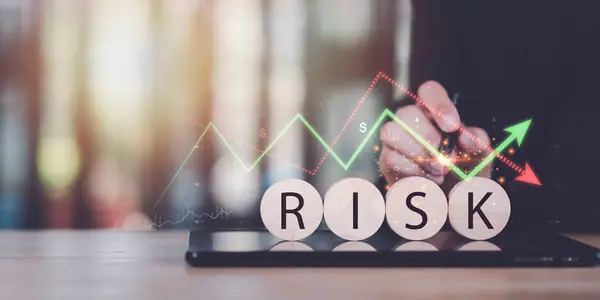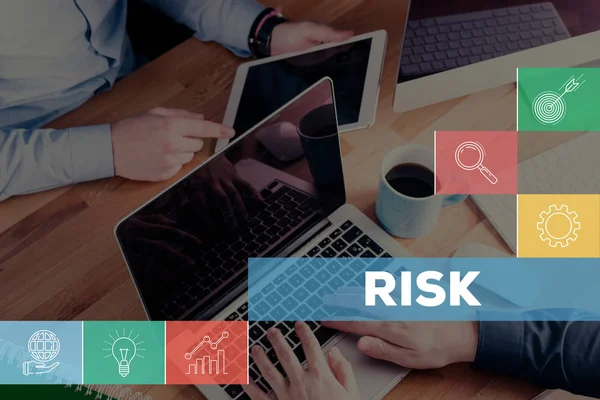In the rapidly evolving realm of cryptocurrency trading, the high volatility of digital assets presents both tantalizing opportunities and formidable risks. Crypto traders, from novices to seasoned professionals, must navigate an environment where fluctuations are the norm and uncertainty is a constant companion. Advanced risk management strategies have become an indispensable tool for those seeking to protect their investments and capitalize on market movements. This article delves into sophisticated techniques that can help traders mitigate risks and enhance their decision-making process, ensuring they remain agile in the face of crypto market unpredictability.
Navigating Crypto Risks

The crypto market is notoriously volatile, with prices subject to dramatic fluctuations due to various factors, including regulatory news, technological developments, and market sentiment. Navigating these risks requires a deep understanding of the market dynamics and a proactive approach to risk management. Traders should stay abreast of the latest news and trends, engage in continuous learning, and keep a close eye on global economic indicators that could influence crypto markets. Regularly assessing one’s risk tolerance and adjusting strategies accordingly is crucial, as is maintaining a disciplined approach to trading. By staying informed and vigilant, traders can position themselves to respond effectively to market changes.
Tailored Risk Profiles

Every crypto trader has a unique set of goals, experience levels, and risk tolerances. A tailored risk profile is essential for developing a personalized risk management strategy. To create an effective risk profile, traders should:
- Clearly define their investment goals.
- Assess their comfort with volatility and potential losses.
- Determine their time horizon for investing.
- Consider their overall financial situation and how it integrates with crypto trading activities.
Armed with this information, traders can craft a risk management plan that aligns with their individual needs, enabling them to make more informed decisions that reflect their personal appetite for risk.
Strategic Diversification

Diversification is a time-honored strategy that can help mitigate risk by spreading investments across various assets or sectors. In the context of crypto trading, strategic diversification might entail:
- Investing in a mix of cryptocurrencies, including both established coins and promising altcoins.
- Exploring different blockchain projects and industries, such as finance, technology, or supply chain management.
- Allocating a portion of the portfolio to non-crypto assets for broader market exposure.
By not putting all their eggs in one basket, traders can reduce the impact of a single asset’s poor performance on their overall portfolio.
Embracing Stop-Losses

Stop-loss orders are a critical component of risk management for crypto traders. They allow traders to set a predetermined price at which their position will automatically sell, thus preventing further losses if the market turns against them. Here are the benefits of using stop-losses:
- They provide a safety net during market downturns.
- They help traders adhere to their risk management plan without the influence of emotions.
- They enable traders to set clear exit points for each trade.
Implementing stop-losses can help traders protect their capital and prevent significant drawdowns in their portfolios.
De-risking with Derivatives

Derivatives, such as options and futures, can be powerful instruments for de-risking a crypto portfolio. These financial contracts allow traders to hedge against adverse price movements and can be used to lock in profits or minimize potential losses. The use of derivatives can be complex, and it’s essential for traders to understand the mechanisms and risks involved. However, when used correctly, derivatives can add a layer of protection and provide additional opportunities for profit in both bull and bear markets.
Automated Risk Systems

Advancements in technology have enabled the development of automated risk systems that can help traders manage their exposure to market risks. Features of these systems often include:
- Real-time monitoring of portfolio performance and risk levels.
- Automatic execution of trades based on predefined criteria.
- Alerts and notifications about significant market events or price movements.
By leveraging automated systems, traders can maintain tighter control over their risk parameters and respond quickly to changing market conditions without having to constantly watch the markets.
Comparison Table: Manual vs Automated Risk Management
| Feature | Manual Risk Management | Automated Risk Management |
|---|---|---|
| Monitoring | Requires constant attention and analysis. | Continuous and real-time, with less need for direct supervision. |
| Execution | Trades are subject to human delay and emotion. | Trades are executed instantly according to algorithms, removing emotion. |
| Alerts | Reliant on external sources and may be missed. | Built-in, timely, and actionable notifications. |
| Adaptability | Adjustments require manual intervention. | Systems can automatically adjust to new parameters and conditions. |
| Consistency | Prone to inconsistency due to human factors. | Consistent application of risk rules and strategies. |
| Scalability | Limited by human capacity and resources. | Easily scalable, handling increased volume and complexity. |
The landscape of cryptocurrency trading is fraught with challenges, but by employing advanced risk management strategies, traders can shield their investments from the market’s caprices. From tailoring individual risk profiles and strategizing diversification to embracing stop-losses and leveraging both derivatives and automated risk systems, these methods form a multifaceted defense against the inherent uncertainties of the crypto world. By mastering these sophisticated techniques, traders can approach the market with confidence, ready to seize opportunities while effectively managing their exposure to risk.

Diversification is a good way to reduce risk in crypto trading, the article says.
Diversifying investments across different crypto assets and sectors can help reduce risk.
The article explains how volatile the crypto market is and stresses the importance of risk management.
The article emphasizes on staying disciplined and adjusting strategies regularly.
I like how it mentions creating a tailored risk profile based on individual goals and risk tolerance.
The comparison between manual and automated risk management shows how technology can improve consistency and scalability.
It talks about how traders should stay updated with news and trends to navigate crypto risks.
Automated risk systems can help manage crypto risks better, the article explains.
Using derivatives like futures and options can help de-risk a crypto portfolio effectively.
Stop-loss orders can help protect your investments from big losses according to the article.
Automated risk systems offer real-time monitoring and can automatically execute trades based on set criteria.
It’s important to stay informed about market changes, as the article advises.
Stop-loss orders are important because they can help prevent further losses in down markets.
The article explains how crypto market is very risky and how to manage that risk.
Creating a tailored risk profile is essential for good trading according to the article.
The article talks about how using derivatives can help manage risks but they are complex.